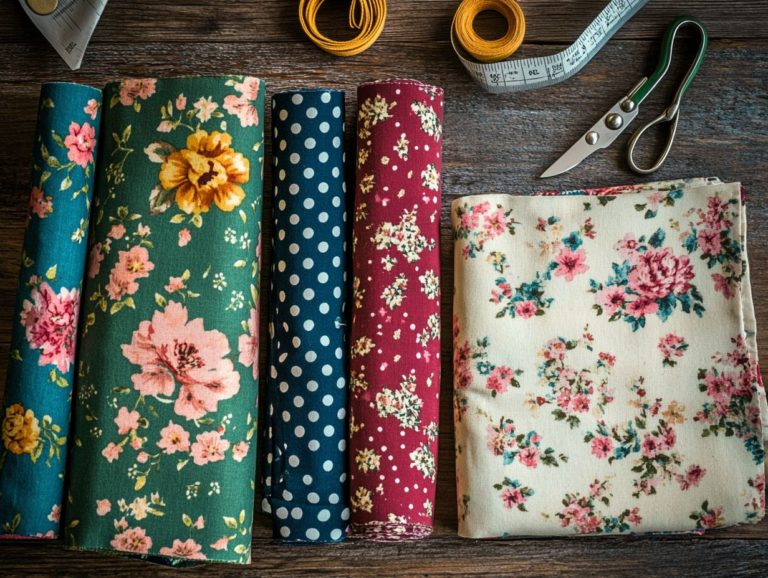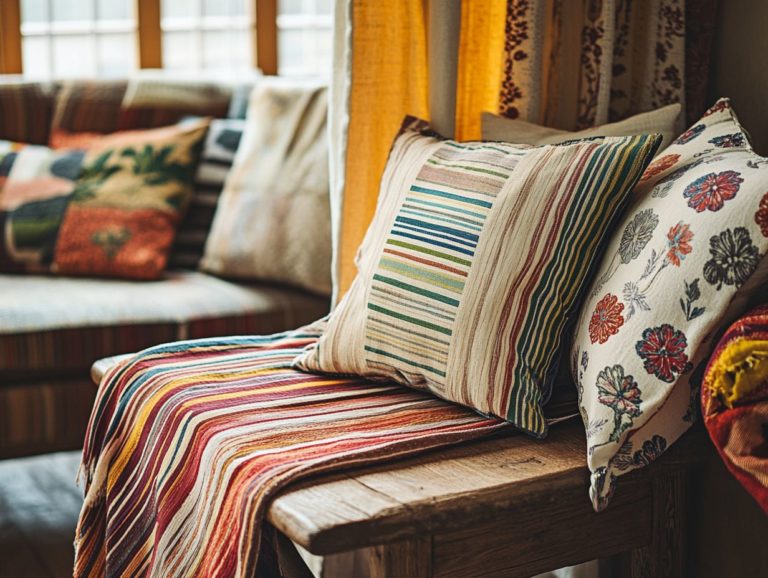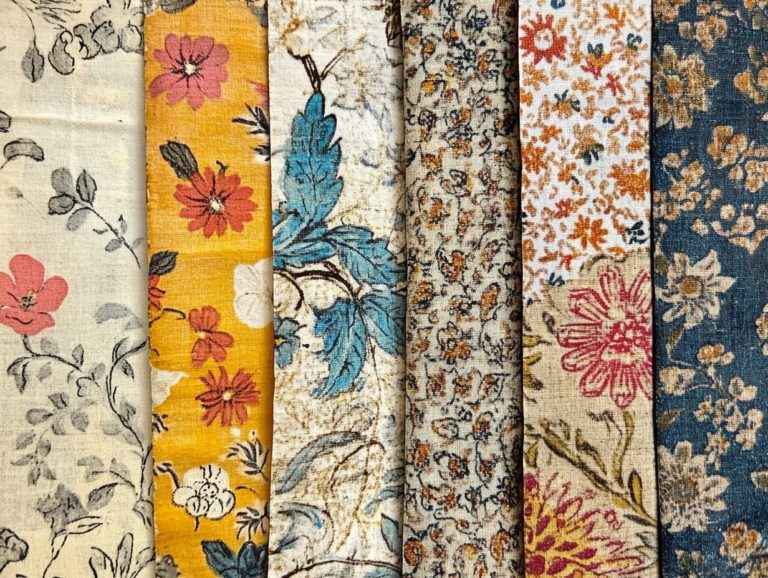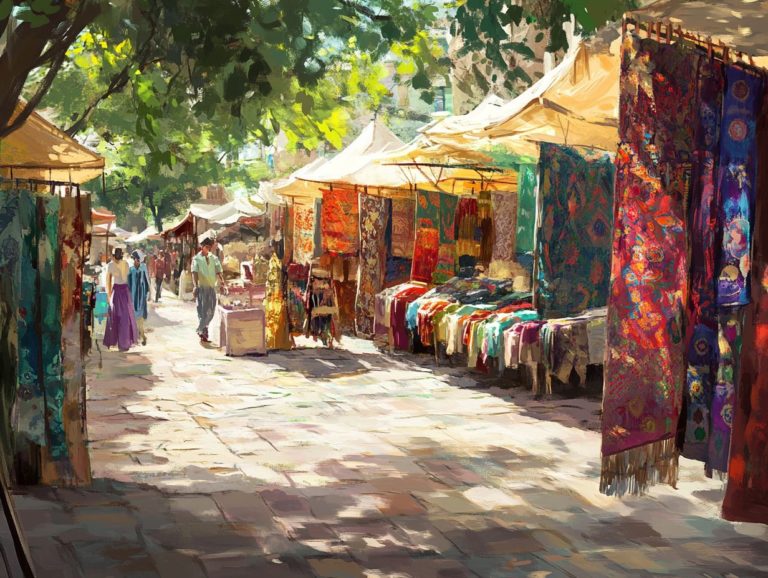How to Repair Vintage Fabrics at Home
Vintage fabrics exude a charm and history that’s nearly impossible to resist, yet they come with their own distinct challenges. Whether it s a cherished heirloom or a thrifted find, wear and tear can certainly take a toll on their beauty.
This guide equips you with essential tools and methods for repairing vintage fabrics right at home. From pinpointing damage to mastering effective sewing techniques and stain removal, you’ll find everything you need.
You will also find tips on how to care for your vintage fabrics.
Get ready to revive your vintage treasures!
Contents
- Key Takeaways:
- Supplies Needed for Vintage Fabric Repair
- Common Types of Damage in Vintage Fabrics
- Exciting Methods to Repair Your Vintage Fabrics!
- Tips for Maintaining Vintage Fabrics
- When to Seek Professional Help
- Frequently Asked Questions
- 1. How do I identify vintage fabrics that need repair?
- 2. Can I repair vintage fabrics at home without damaging them?
- 3. What supplies do I need to repair vintage fabrics at home?
- 4. How do I mend small holes and tears in vintage fabrics?
- 5. Can I remove stains from vintage fabrics without professional help?
- 6. How can I prevent further damage to my vintage fabrics?
Key Takeaways:
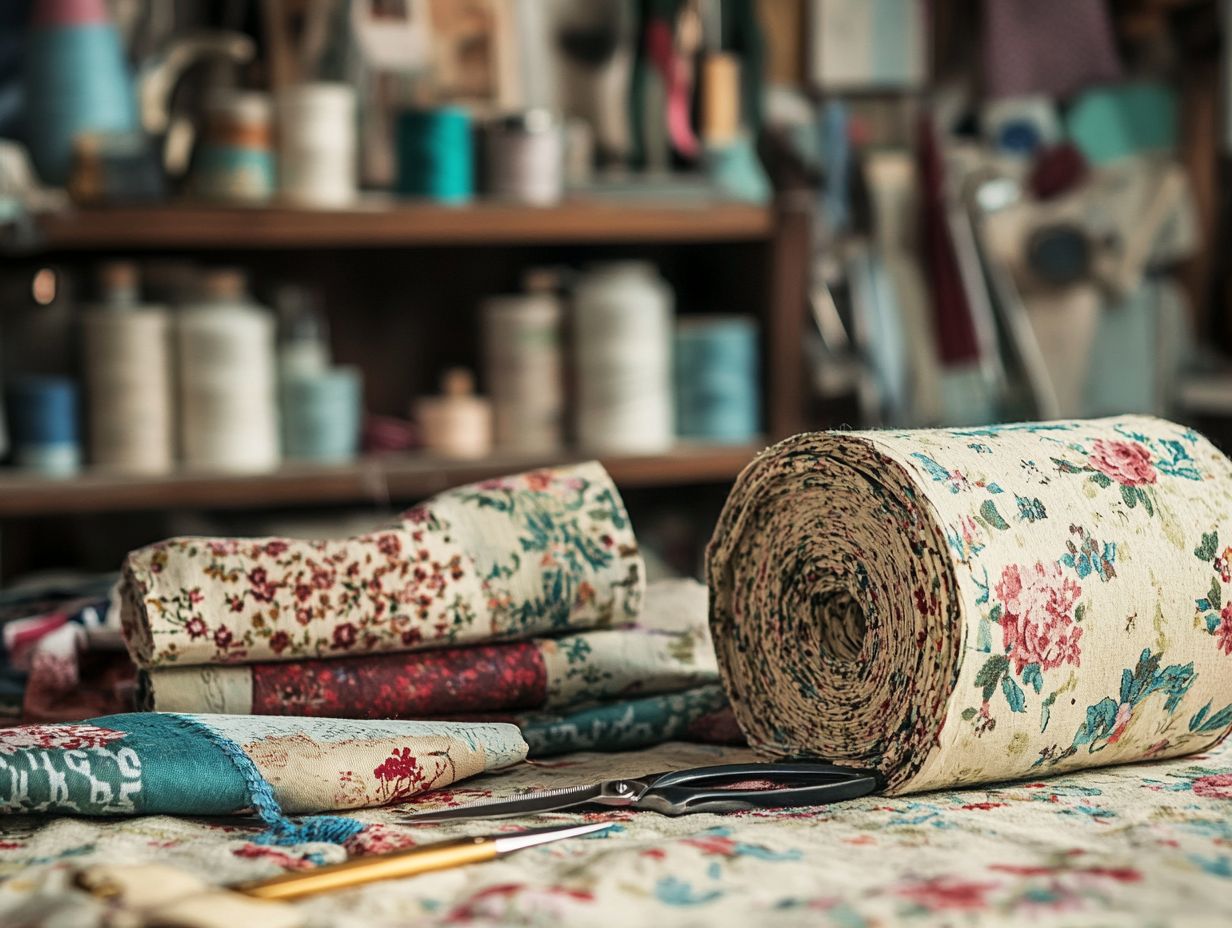
- Vintage fabric repair involves identifying and assessing damage, sewing techniques and patching, stain removal and color restoration, and proper storage and care.
- Essential tools and materials for vintage fabric repair include a sewing machine, needles, thread, fabric patches, and stain removers.
- Seek professional help for complex or delicate repairs, and avoid DIY repairs if it may cause further damage to the vintage fabric.
What is Vintage Fabric Repair?
Vintage fabric repair is an essential practice for you, involving the restoration and mending of antique textiles to uphold their beauty, integrity, and sentimental value. This process requires a variety of techniques designed to preserve the historical significance and usability of beloved items like vintage quilts and clothing.
With skillful handling, you can extend the life of treasured fabric finds while paying homage to the craftsmanship behind each piece, ensuring that these gems are passed down through generations.
Essentially, vintage fabric repair acts as a bridge between the past and the present, allowing you to appreciate the artistry of earlier times while keeping those precious memories intact. Techniques such as patching, darning, and hand-stitching facilitate gentle repairs, preserving the original patterns and textures that weave a unique narrative. For those interested in enhancing their skills, exploring the best vintage fabric restoration techniques can be invaluable.
The emotional connections tied to heirloom textiles often encapsulate family histories and milestones, making their preservation even more meaningful. Each mended stitch evokes nostalgia and honors the legacy of those who crafted these exquisite pieces, deepening your relationship with them.
Supplies Needed for Vintage Fabric Repair
When you embark on vintage fabric repair, having the right supplies is crucial for successful restoration and maintenance, especially for items like handkerchief dresses.
Essential items include a variety of sewing techniques and tools tailored to different fabric types, along with effective cleaning solutions to prepare your textiles for repair.
By gathering these supplies, you ll be well-prepared to tackle common fabric stains and enhance the longevity of your cherished vintage treasures.
Essential Tools and Materials
Essential tools and materials for your vintage fabric repair journey include a variety of sewing needles tailored for different fabric types, alongside supplies necessary for quilt restoration and fabric maintenance. Items like fabric patches and specialized cleaning solutions are pivotal in addressing damage and preserving the integrity of your cherished vintage pieces.
For instance, selecting the right sewing needle can significantly impact the outcome of your repair. Needles come in various sizes and points universal, ballpoint, and sharp catering to a range of fabrics, whether you re working with delicate silk or sturdy denim.
In terms of fabric patches, you have options like iron-on or hand-sewn patches, which not only conceal imperfections but can also introduce a decorative flair.
Specialized cleaning solutions, specifically formulated for vintage textiles, ensure that the original fibers remain intact while effectively lifting dirt and stains.
By combining these essential tools, you enhance the repair process and contribute to the longevity of your treasured vintage items.
Common Types of Damage in Vintage Fabrics
Common types of damage found in vintage fabrics often include stains, tears, and signs of aging. These issues can diminish the allure of antique textiles.
Understanding these problems is crucial for you. It enables the application of suitable cleaning methods and restoration techniques. By recognizing specific issues, you can ensure that treasured items like vintage quilts are preserved effectively for future generations to appreciate.
Identifying and Assessing Damage
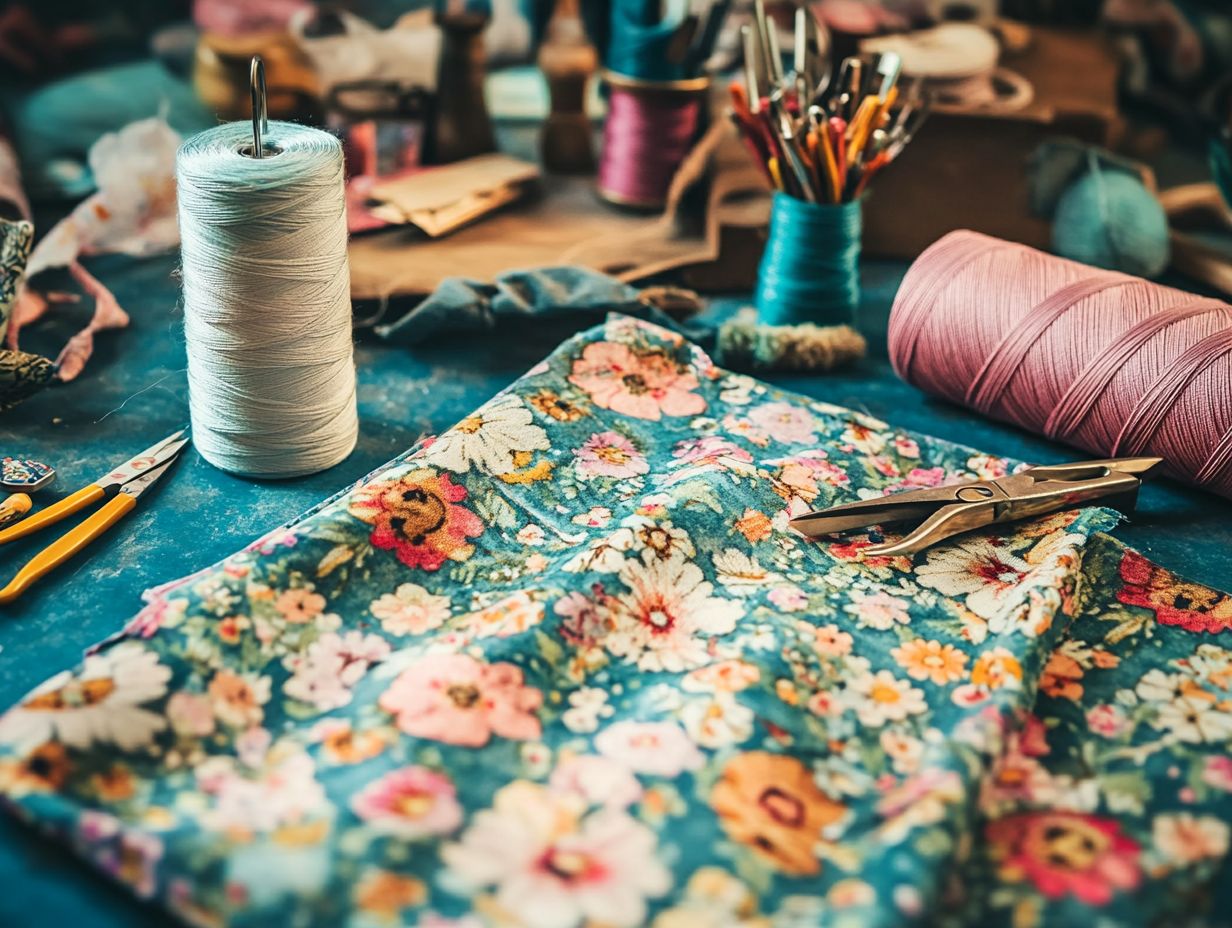
Identifying and assessing damage in vintage fabric requires your keen eye for detail. You need to observe fabric stains, tears, and the overall condition. This careful scrutiny is essential for repair and preservation.
Understanding the details of fabric care and textile conservation helps you chart the best path for mending cherished pieces without compromising their integrity.
To kick off the assessment, ensure you have ample lighting to thoroughly examine the fabric. Take note of any areas showing discoloration or wear. Gentle handling is key since those vintage materials can be particularly delicate.
Next, document your findings with photographs. They ll serve as a valuable reference for any necessary repairs. Don t overlook the importance of assessing the fabric’s composition. Natural fibers like silk or cotton often require different treatment compared to synthetic blends.
Every observation you make is crucial. It helps you prioritize repairs and choose the right materials and methods. This thoughtful approach aligns with the fabric s historical value, ensuring that the repairs are not only aesthetically pleasing but also respectful of the item s original craftsmanship.
Exciting Methods to Repair Your Vintage Fabrics!
When it comes to repairing vintage fabrics, the best methods involve a blend of sewing techniques, careful cleaning of the textiles, and specialized stain removal to bring back their original charm.
Your approach will change based on the specific damage and the type of fabric you have. This could range from straightforward patching techniques to more intricate quilt repair and restoration processes. To ensure the best care, consider following the tips and techniques for vintage fabric preservation. Each piece deserves careful treatment.
Sewing Techniques and Patching
Sewing techniques and patching are essential allies in vintage fabric repair. They offer effective solutions for various types of damage in quilts and other cherished textiles. By understanding different fabric types and applying the right patching techniques, you can significantly enhance the success of your projects aimed at restoring beloved items.
For instance, hand-stitching proves particularly beneficial for delicate fabrics. It allows you to maintain precise control without risking further damage. Techniques like visible mending not only serve to repair but also introduce a unique aesthetic flair, transforming worn areas into artful accents.
Choosing the right thread color and width enables you to blend repairs seamlessly or create striking contrasts, depending on your desired effect. Understanding interfacing a type of fabric used to strengthen weak areas can also be invaluable, as it helps reinforce weakened sections for longevity.
By skillfully employing a combination of these techniques, you can lovingly restore vintage textiles while preserving their rich stories and distinctive charm.
Now that you understand the basics, it’s time to bring your vintage fabrics back to life! Check out this guide on how to style vintage fabric pillows in your home and start your restoration journey today!
Stain Removal and Color Restoration
Stain removal and color restoration are essential for caring for vintage fabrics. You need to use the right cleaning solutions tailored specifically to each fabric type. Addressing stains effectively not only revives the fabric s appearance but also helps preserve valuable textiles, like vintage quilts and antique clothing.
Vintage fabrics are often delicate and prone to deterioration. They require special attention to ensure their longevity. Techniques like spot cleaning with gentle detergents that are safe for fabrics become critical when tackling specific stains. For more detailed guidance, check out this how to work with delicate vintage fabrics resource. For example, silk and satin may need specialized silk cleaners, while sturdier materials like cotton can typically handle a mild mixture of vinegar and water.
Using color-safe bleach or fabric dyes is vital for refreshing faded hues without compromising the integrity of the fibers. Discover these effective cleaning techniques and employ them correctly to maintain the historical significance and beauty of your treasured textiles.
Tips for Maintaining Vintage Fabrics
To maintain vintage fabrics, pay careful attention to fabric care principles. Use effective cleaning methods tailored for vintage items and proper storage techniques to safeguard your cherished treasures.
By implementing these practices, you can significantly enhance the longevity and beauty of valuable pieces like heirloom quilts and other antique textiles.
Proper Storage and Care
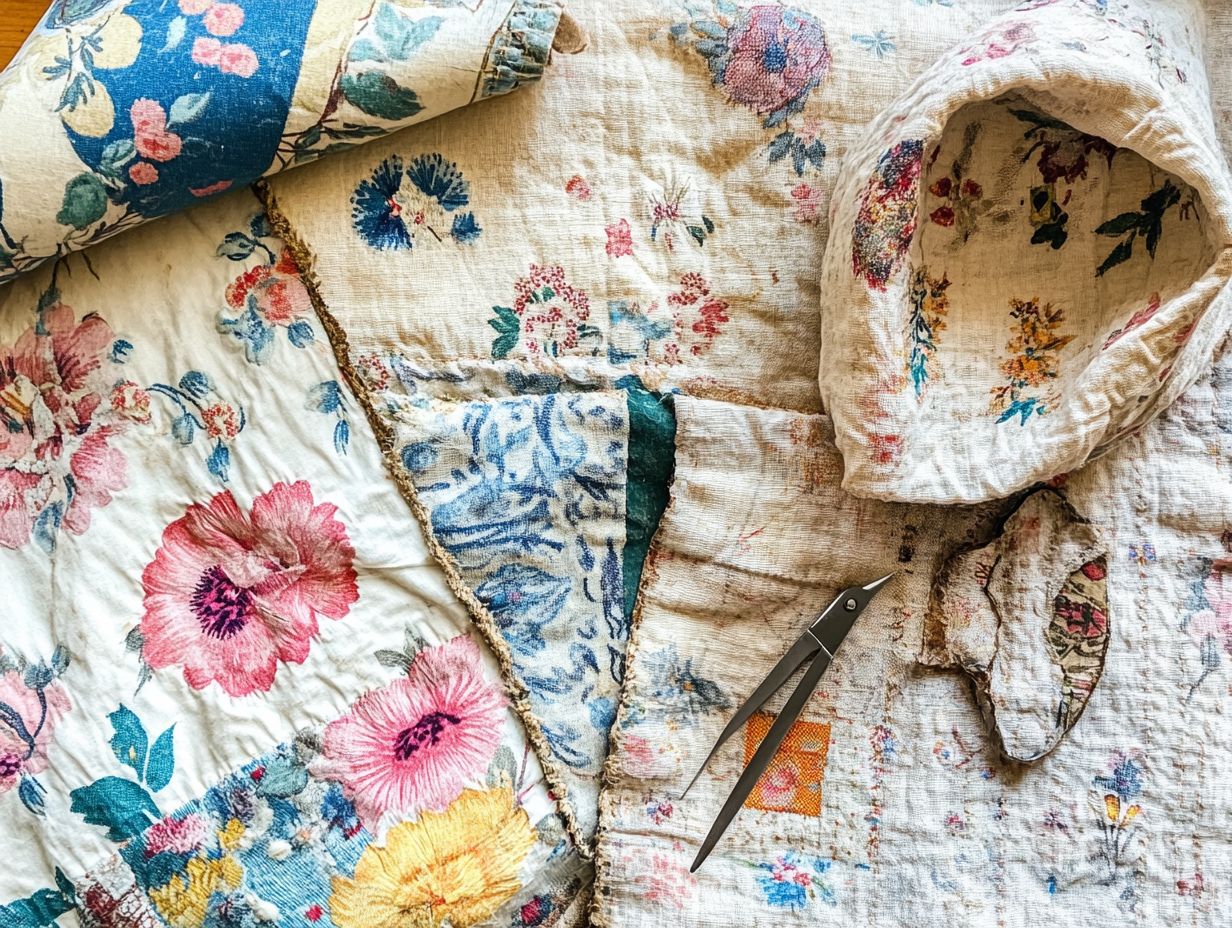
Proper storage and care of vintage fabric are crucial for ensuring their longevity and preventing deterioration. Focus on controlling moisture and environmental factors while managing fabric moisture levels. By utilizing suitable fabric storage solutions, like breathable cotton bags and airtight containers, you can mitigate risks associated with fabric aging and preserve the beauty of your cherished textiles.
To maintain the integrity of these delicate materials, such as vintage clothing and antique textiles, store them in a cool, dry environment. Keep them away from direct sunlight, which can lead to fading and weakened fibers. Placing acid-free tissue paper between layers of fabric helps prevent creasing while allowing air circulation to manage moisture buildup.
Consider using airtight containers or breathable cotton bags to protect your vintage fabrics from dust and pests while maintaining a consistent humidity level. Regularly check the storage area for temperature fluctuations to safeguard these precious fabrics, ensuring they can be enjoyed for generations to come.
When to Seek Professional Help
Knowing when to enlist professional assistance for vintage fabric repair can save you time and prevent additional damage. While many minor issues might be managed with basic sewing skills, some situations demand the refined expertise of professionals who specialize in quilt restoration and advanced cleaning methods.
Their knowledge is invaluable for preserving the integrity of delicate fabrics, ensuring your cherished pieces receive the utmost care.
When DIY Repair is Not Recommended
While the allure of DIY repairs may be tempting when it comes to vintage fabric, there are moments when it s wise to pause especially when you re handling rare or delicate antique textiles. In these situations, seeking professional assistance for quilt restoration, which means fixing and preserving old quilts, can be a safeguard against irreversible damage, ensuring the longevity of these precious items.
Take, for example, a task that seems straightforward, like stitching a small tear or a distressed area that may require patching techniques in a vintage silk dress. Using the wrong thread could unwittingly result in threads coming loose or discolored patches, turning a simple fix into a regrettable blunder. Trying to clean stained antique linens with harsh chemicals can lead to color bleeding or even fabric degradation. For those tackling similar challenges with furniture, understanding how to repair vintage leather furniture is essential. These unique textiles often require specialized knowledge and tools that only seasoned professionals possess.
Hiring an expert not only keeps your fabric looking its best but can also increase its value for the future!
By engaging an expert, you preserve the fabric s original integrity and protect cherished heirlooms for future generations. Therefore, it s essential to carefully assess the condition of each piece and any fabric stains that need addressing before starting a DIY project.
Frequently Asked Questions
1. How do I identify vintage fabrics that need repair?
If you have vintage fabrics in your possession, look for signs of wear and tear such as holes, tears, or discoloration. Also, check for loose threads, missing buttons, or broken zippers.
2. Can I repair vintage fabrics at home without damaging them?
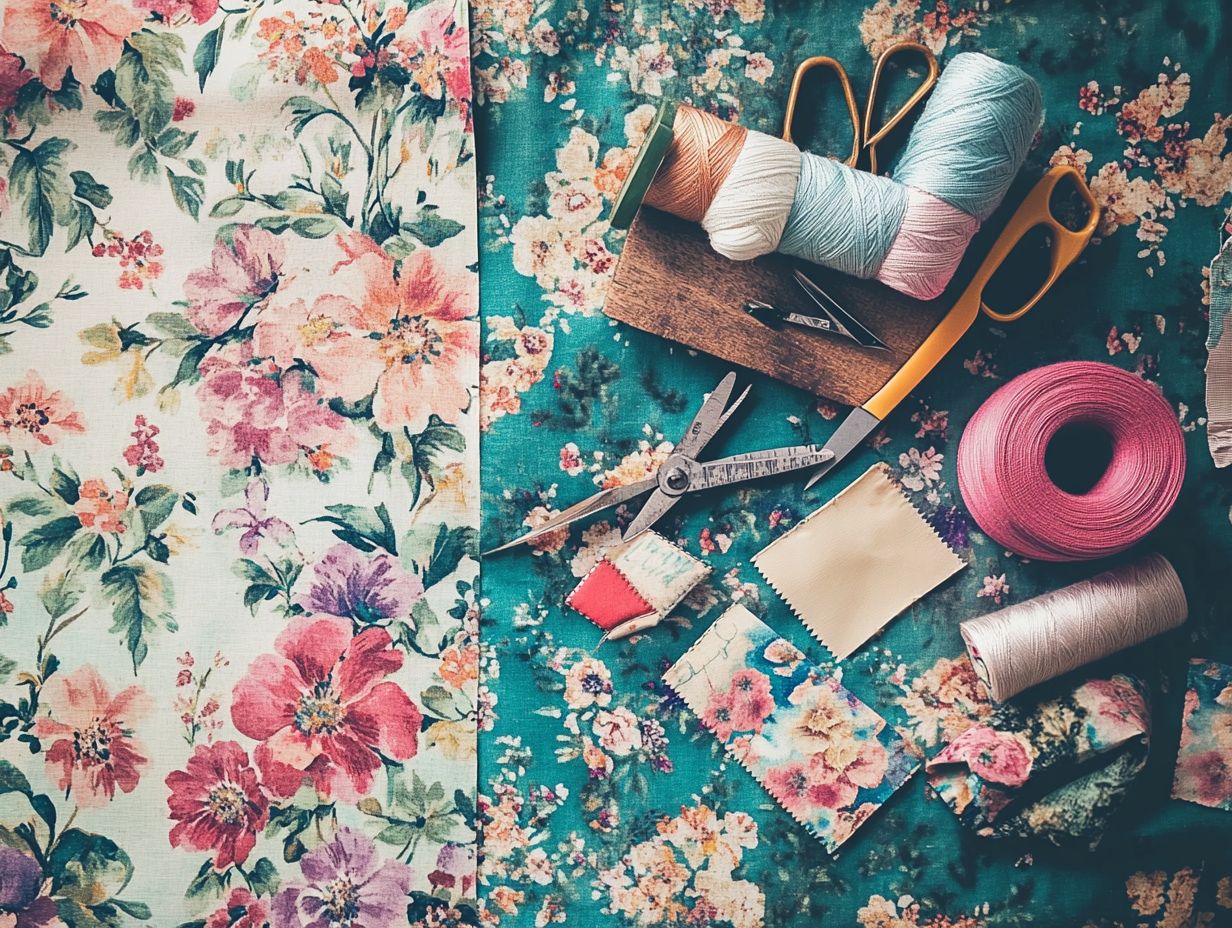
Yes, it is possible to repair vintage fabrics at home without causing further damage. Be gentle and use the right techniques and materials to avoid damage.
3. What supplies do I need to repair vintage fabrics at home?
Some essential supplies to have on hand for repairing vintage fabrics include a sewing kit, fabric glue, iron-on patches, thread, needles, and scissors. You may also need specialized tools or materials depending on the specific type of fabric and damage.
4. How do I mend small holes and tears in vintage fabrics?
Small holes and tears in vintage fabrics can be mended by hand stitching with a matching thread or using iron-on fabric patches. Make sure to use small, neat stitches to keep the repair discreet.
5. Can I remove stains from vintage fabrics without professional help?
In some cases, it is possible to remove stains from vintage fabrics at home using natural remedies or specialized cleaning solutions. You can try using gentle stain removers or natural remedies such as lemon juice or baking soda. However, it is always best to test on a small, inconspicuous area first and seek professional help if the stain persists.
6. How can I prevent further damage to my vintage fabrics?
To prevent further damage to your vintage fabrics, be gentle when handling and storing them, especially when air drying or washing fabrics. Avoid exposing them to direct sunlight or harsh chemicals. Also, make sure to clean and repair any damage as soon as you notice it, utilizing online resources or community support in groups like the Quilt Restoration Facebook Group to prevent it from getting worse.
Don t hesitate! Preserve your precious vintage fabrics today by consulting a professional!


